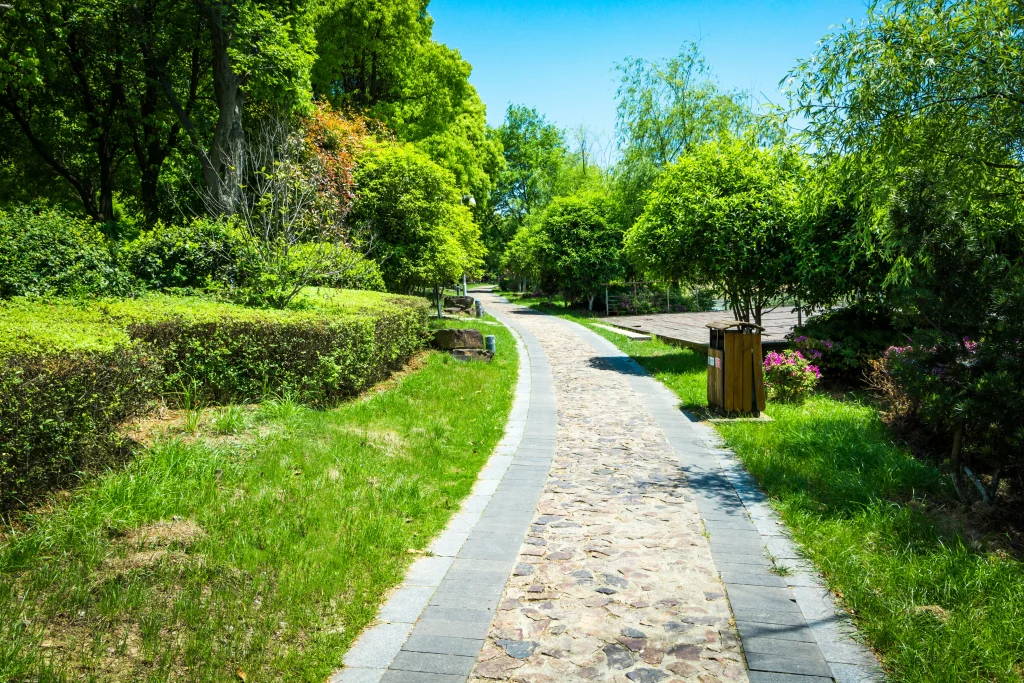Flower beds remain the cornerstone of stunning Colorado landscapes. These vibrant displays enhance curb appeal while supporting local pollinators crucial to our ecosystem.
Colorado’s unique climate demands thoughtful planning. Successful flower bed designs incorporate drought-tolerant plants and native species that thrive in our semi-arid conditions. Temperature swings from scorching summers to frigid winters require plants that adapt to extreme variations.
This guide presents 25+ diverse flower bed ideas spanning multiple styles, strategic locations, varied materials, and different maintenance requirements. Each idea addresses Colorado’s specific growing challenges while maximizing visual impact.

25+ Stunning Flower Bed Ideas for Colorado Yards
Pea Gravel Base with Low-Growing Native Perennials
Create compact charm with pea gravel foundations supporting native perennials like penstemon and blanket flower. For more on native plant selections, check out our useful guide on xeriscape plants in Colorado. This design provides excellent drainage while requiring minimal water once established.
The gravel retains moisture during brief Colorado rains and prevents soil erosion during intense summer storms. Low-growing varieties maintain neat appearances without overwhelming small spaces.
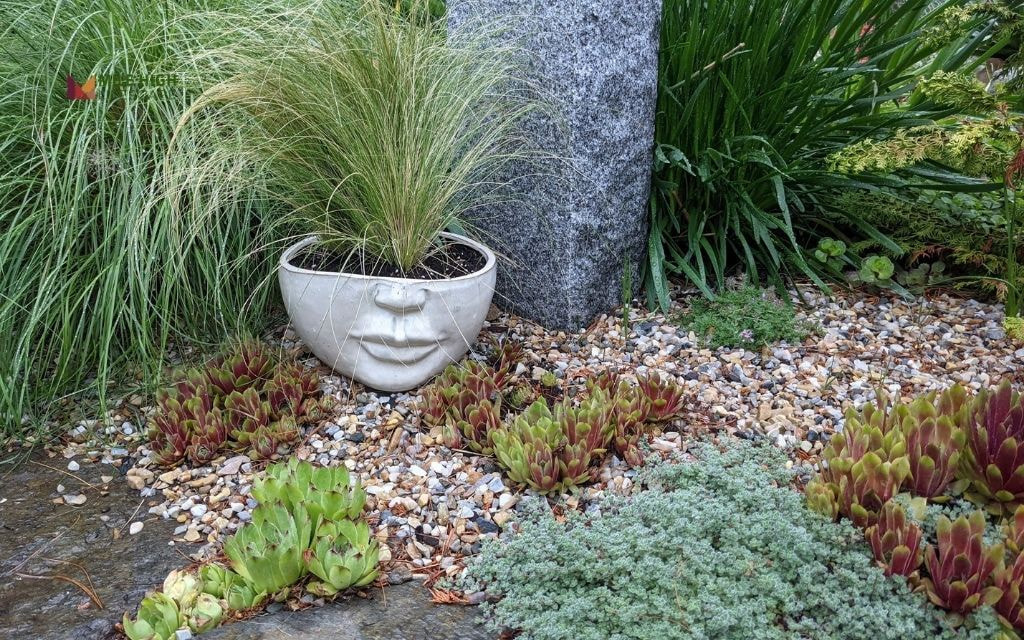
Raised Circular Beds with Drip Irrigation
Circular raised beds offer defined boundaries while improving soil drainage, essential for Colorado gardens. Install drip irrigation systems to deliver water directly to plant roots, reducing waste and preventing fungal issues common in overhead watering. These structures work particularly well around mailboxes or as standalone features in front yards.
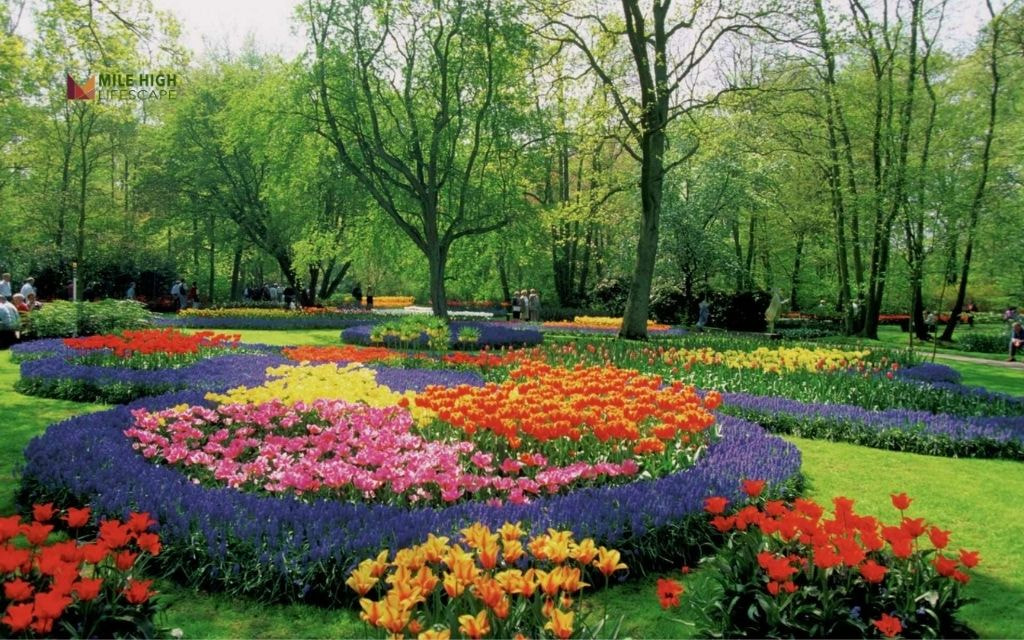
Mini Corner Bed with Evergreen Shrubs
Transform neglected corners into year-round interest zones using compact evergreen shrubs like dwarf blue spruce or juniper. Add seasonal color with hardy perennials that complement the shrubs’ structure. This approach requires minimal maintenance while providing constant visual appeal through Colorado’s long winters.
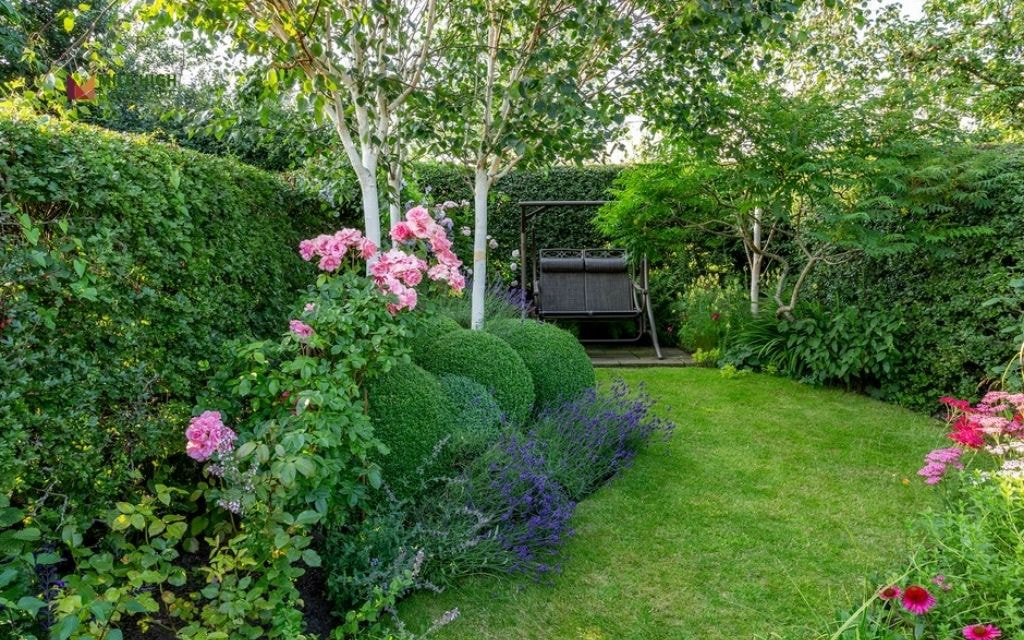
Linear Flower Strip Along Fences
Design narrow borders along fence lines using drought-tolerant perennials arranged in repeating patterns. Ornamental grasses, salvia, and yarrow create striking linear displays that soften harsh fence boundaries. These strips require less water than traditional wide beds while delivering maximum visual impact.
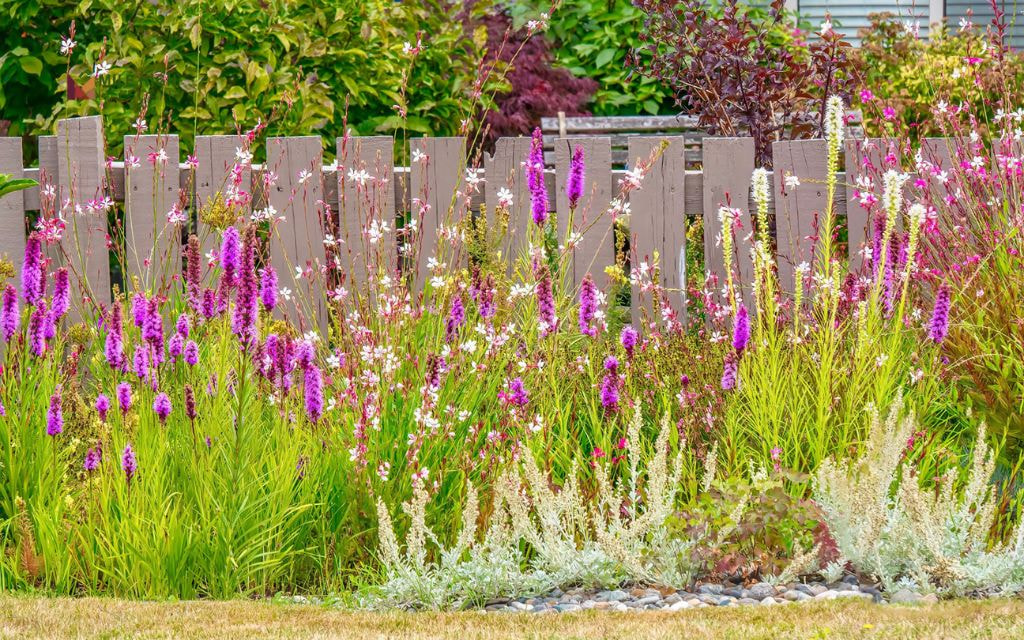
Small Space Beds with Potted Accents
Combine in-ground plantings with strategically placed containers for flexible seasonal displays. Use large ceramic or concrete pots filled with annual flowers to add bursts of color that change throughout growing seasons. This hybrid approach allows experimentation with different plant combinations without permanent commitments.
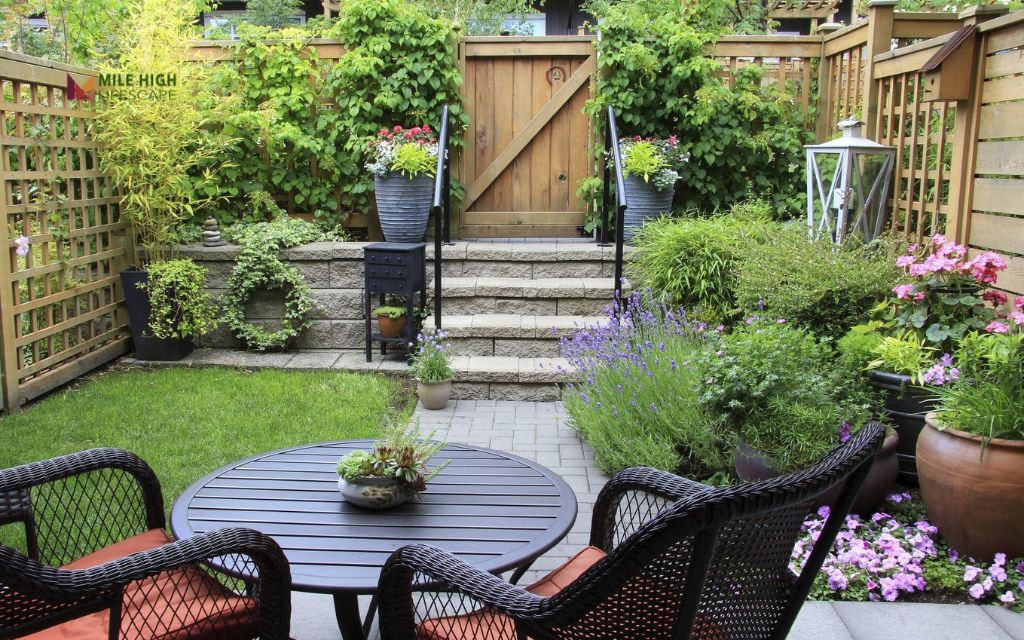
Elevated Cinder-Block Flower Beds
Construct simple raised beds using decorative cinder blocks for improved drainage and easier maintenance. Fill blocks with colorful annuals or herbs for functional beauty. These structures warm soil faster in spring and provide better root drainage during Colorado’s unpredictable weather patterns.
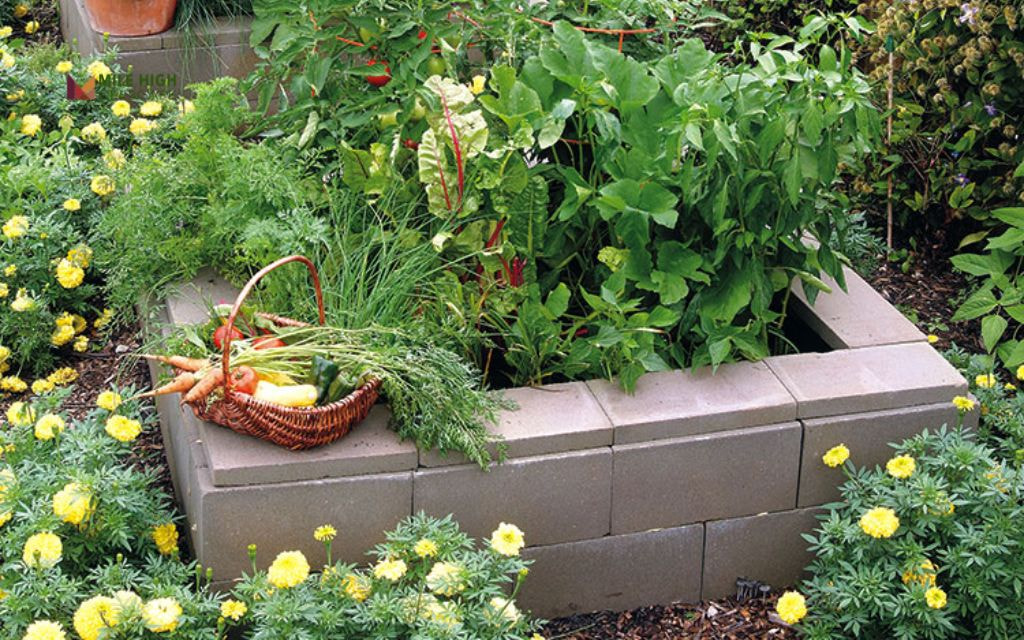
Full Sun Combo: Lavender, Salvia, Black-Eyed Susan
Combine these heat-loving perennials for continuous summer color in sunny locations. Lavender provides fragrance and attracts beneficial insects, while salvia offers vertical structure and extended blooming periods. Black-eyed Susans fill gaps with bright yellow flowers that persist through fall frosts. This trio requires minimal water once established.
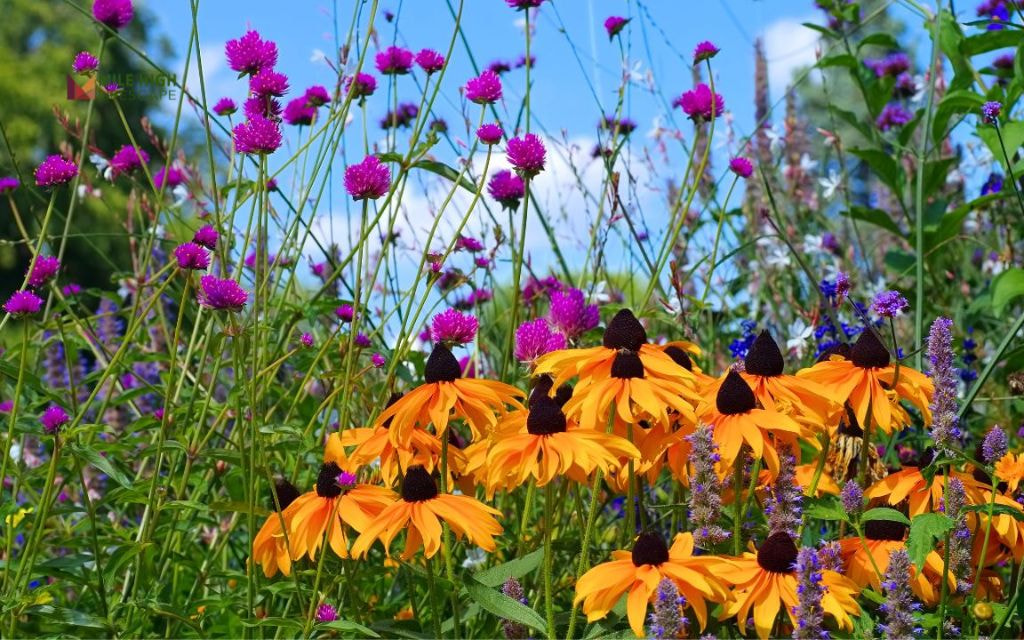
Shade-Loving Bed Under Trees with Vinca and Hostas
Create lush understory plantings beneath mature trees using shade-tolerant perennials. Vinca provides ground cover with delicate purple or white flowers, while hostas offer dramatic foliage textures. Add coral bells for additional color variety. These plants thrive in Colorado’s dappled shade conditions without competing with tree roots for water.
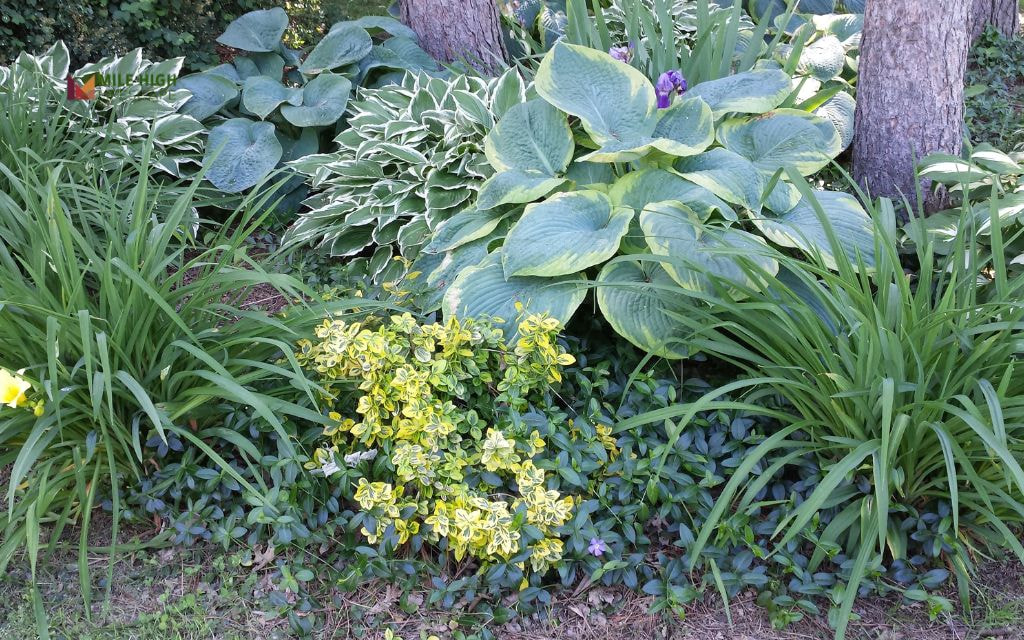
Mixed Sun Zones with Adjustable Irrigation Lines
Design beds that transition from full sun to partial shade using zoned irrigation systems. Plant sun-loving varieties like coneflowers in bright areas and positioning shade plants like astilbe in protected zones. Adjustable drip lines ensure each plant receives appropriate water quantities based on sun exposure and water needs.
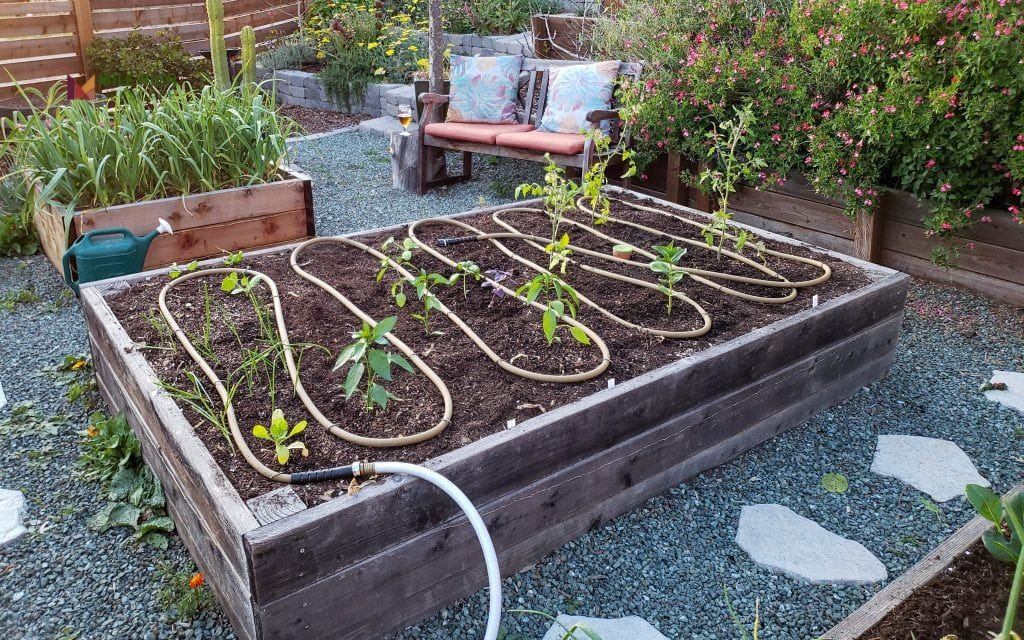
Rock Mulch with Native Penstemon and Yarrow
Replace traditional mulch with decorative rock for long-lasting, low-maintenance beds. Native penstemon provides vertical purple spikes while yarrow spreads naturally to fill spaces. Rock mulch reflects heat, conserves moisture, and eliminates annual mulch replacement costs. This combination thrives in Colorado’s challenging conditions with minimal intervention.
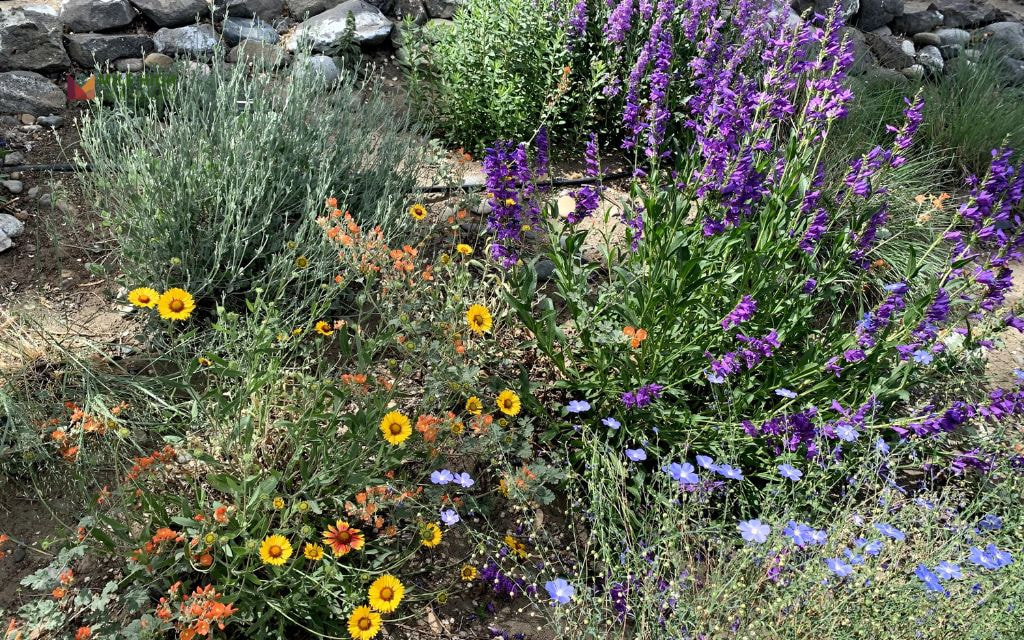
Decomposed Granite with Agastache and Sedum
Create modern, water-wise gardens using decomposed granite as ground cover. Agastache attracts hummingbirds with fragrant purple spikes. Sedum provides succulent textures and fall color. This mineral-based approach requires virtually no supplemental watering after establishment and suits contemporary landscape styles.
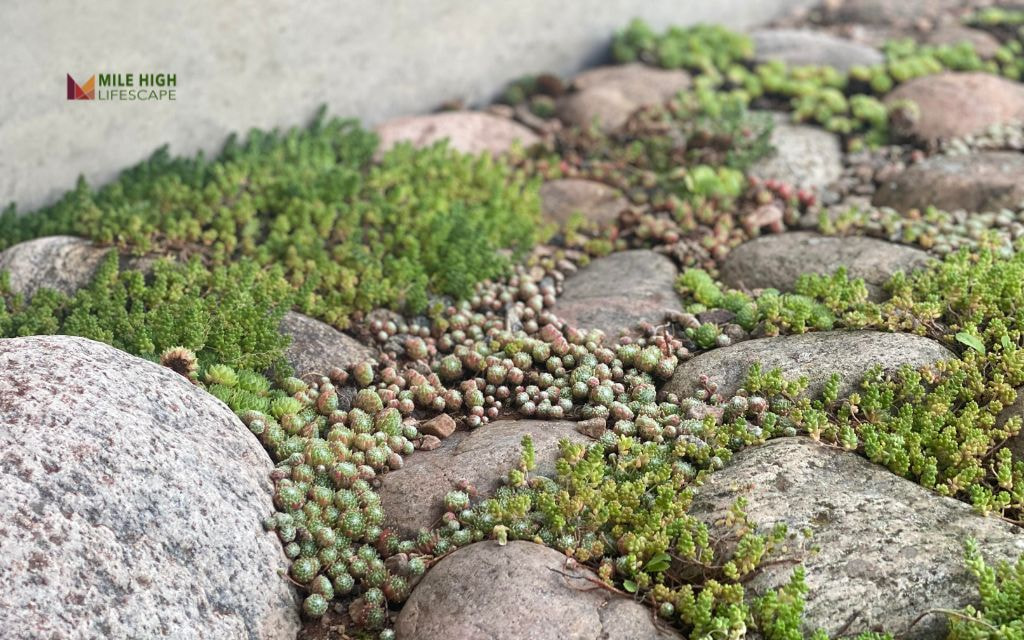
Mulch Bed with Grasses and Flowering Herbs
Combine practical herbs with ornamental grasses for functional beauty. Plant lavender, thyme, and sage alongside feather reed grass and blue fescue. Organic mulch conserves moisture while supporting beneficial soil organisms. Harvest herbs for kitchen use while enjoying their landscape contributions throughout growing seasons.
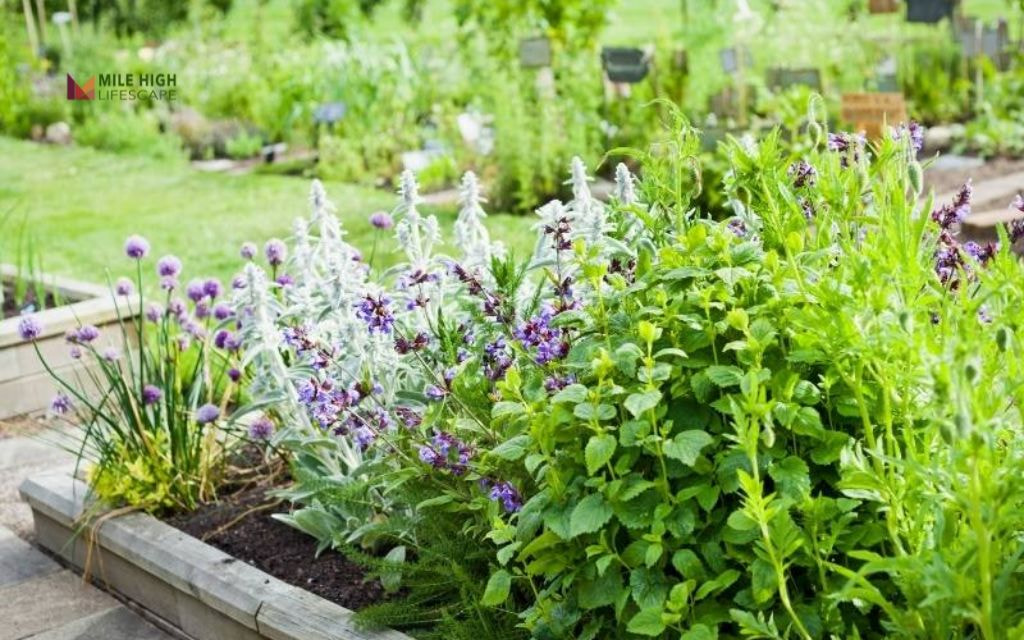
Brick-Edged Beds for Classic Front Yards
Define traditional flower beds using classic brick edging that complements colonial or craftsman architecture. Fill beds with cottage garden favorites like catmint, coneflowers, and daylilies. Brick edging provides permanent boundaries that prevent grass encroachment with timeless appeal to front yard landscapes.

Stone Retaining Wall Bed on Slopes
Address sloped areas with natural stone retaining walls that create level planting areas. Fill terraced sections with cascading plants like creeping phlox or trailing sedums. Stone walls prevent soil erosion during thunderstorms while creating dramatic landscape features that increase property values.
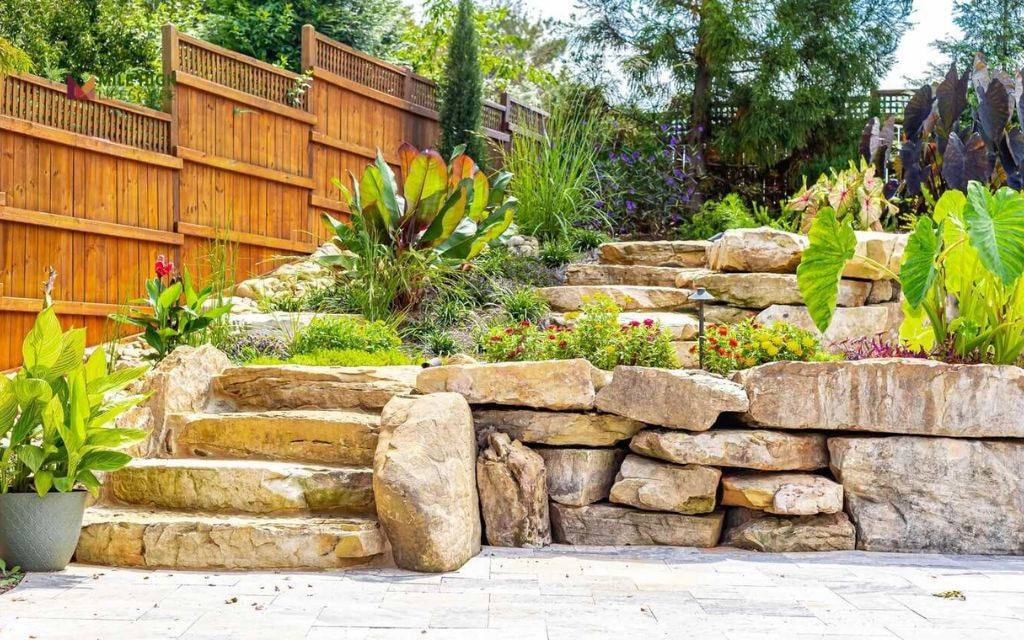
River Rock Mixed with Mulch in Backyard
Combine river rock accents with organic mulch for textural interest in informal backyard settings. Use larger rocks as focal points while allowing mulch to support plant health. This mixed approach provides visual variety while maintaining practical benefits of both materials.
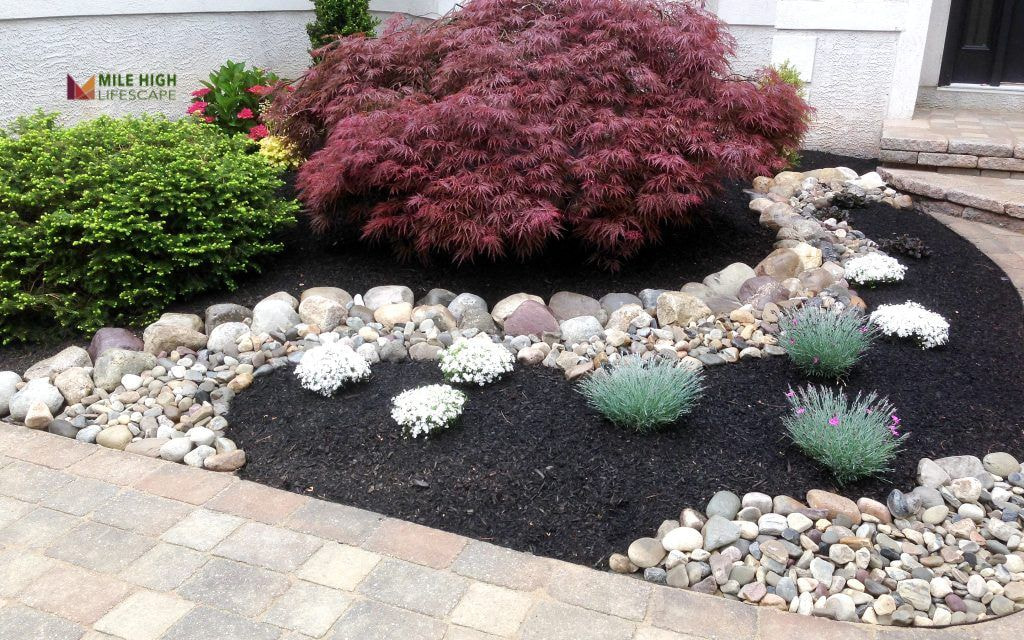
Gravel and Pavers with Drought-Hardy Succulents
Design contemporary beds using gravel matrices punctuated by decorative pavers. Plant architectural succulents like yucca, agave, and various sedums between pavers. This modernist approach requires minimal water and gives striking geometric patterns suitable for contemporary homes.
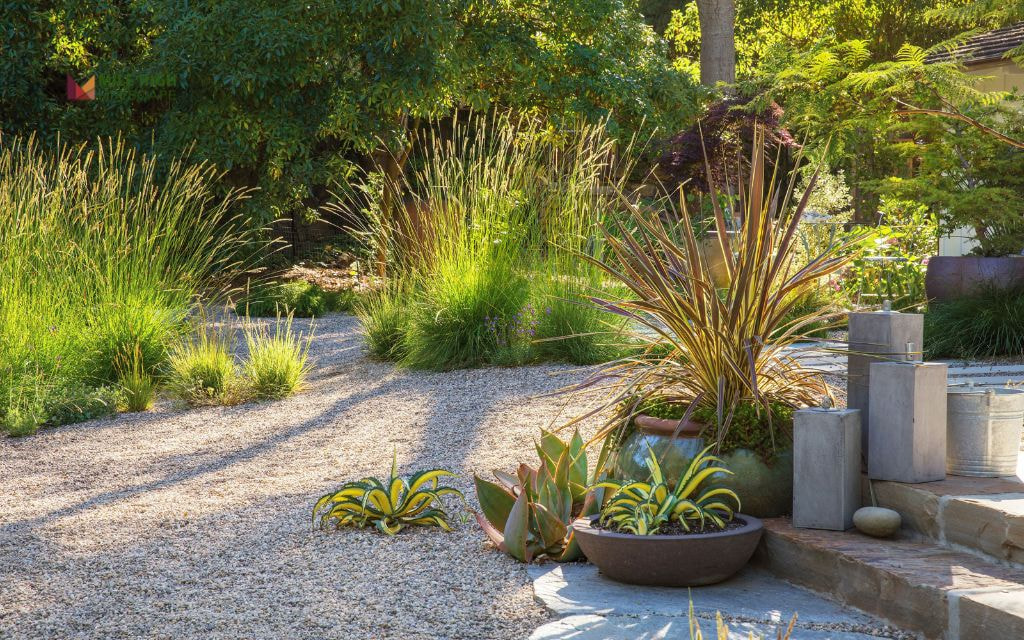
Flower Beds with Lighting Embedded in Rock Edging
Install low-voltage LED lighting within rock borders for evening garden enjoyment. Use up-lighting to highlight specimen plants or pathway lighting for safety and ambiance. Solar-powered options eliminate electrical installation costs while providing sustainable illumination throughout Colorado’s long summer evenings.
We provide a comprehensive guide on landscape rock ideas. You can think about and choose the type of rock that best suits your needs.
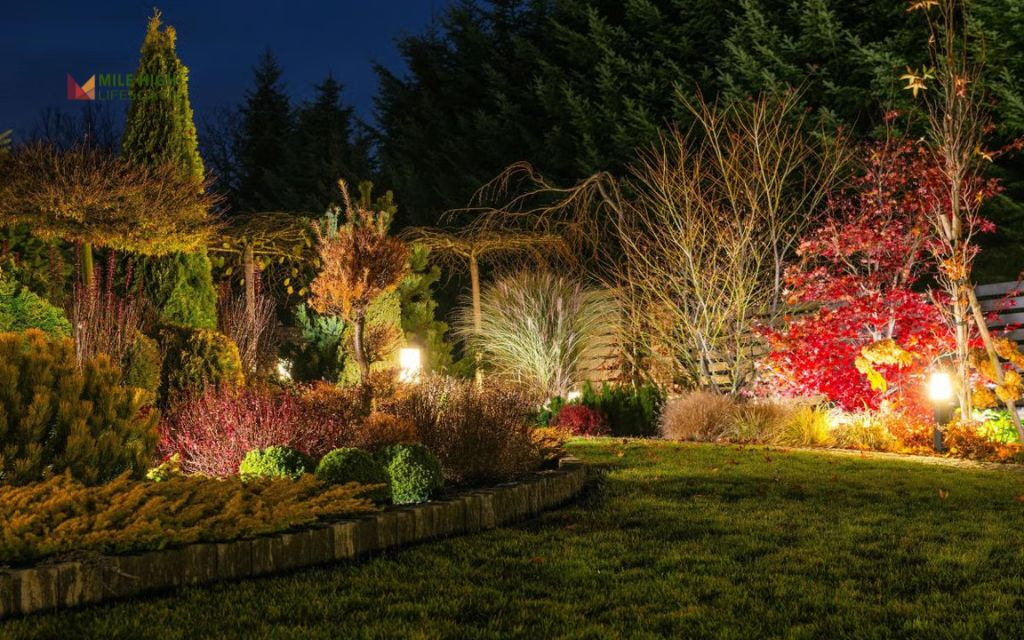
Wraparound Bed for Mailbox with Salvia and Alyssum
Create welcoming mailbox gardens using colorful, low-maintenance perennials. Purple salvia provides height and attracts pollinators and white alyssum forms fragrant ground cover. This combination blooms from spring through fall while requiring minimal water and maintenance.
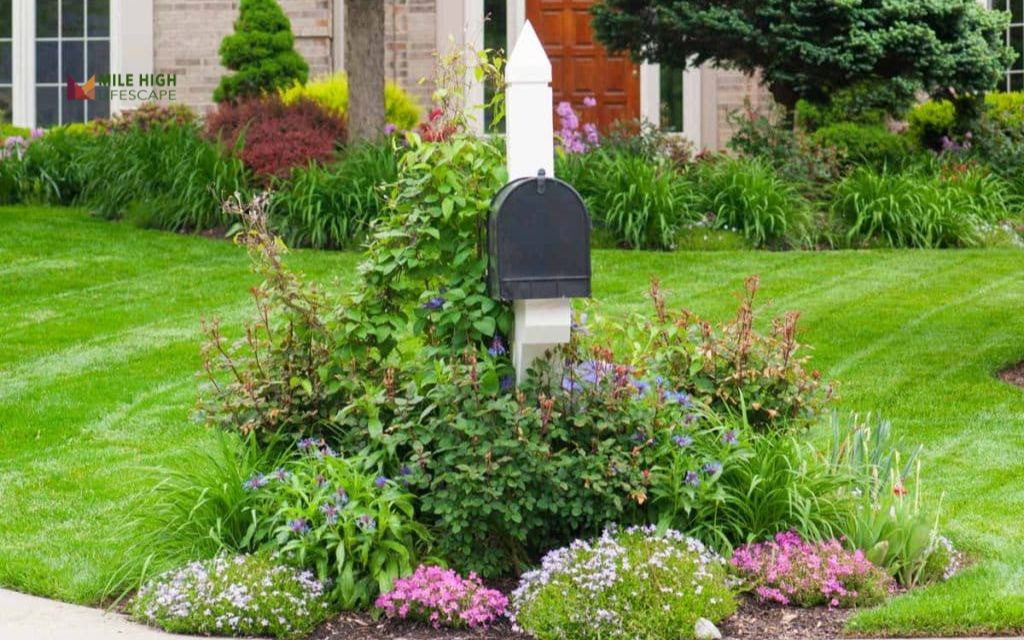
Semi-Circular Bed by Porch Entry with Mixed Heights
Design layered plantings near front entrances using plants of varying heights for visual depth. Position tall ornamental grasses in back, medium perennials in center, and low ground covers in front. This arrangement creates inviting approaches while ensuring clear sight lines for security.

Flag Pole Flower Bed
Honor patriotic themes using flowers in coordinating colors around flag installations. Plant red salvia, white alyssum, and blue catmint for seasonal displays. Add ornamental grasses for structure and movement. This themed approach creates focal points while expressing personal values through landscape design.
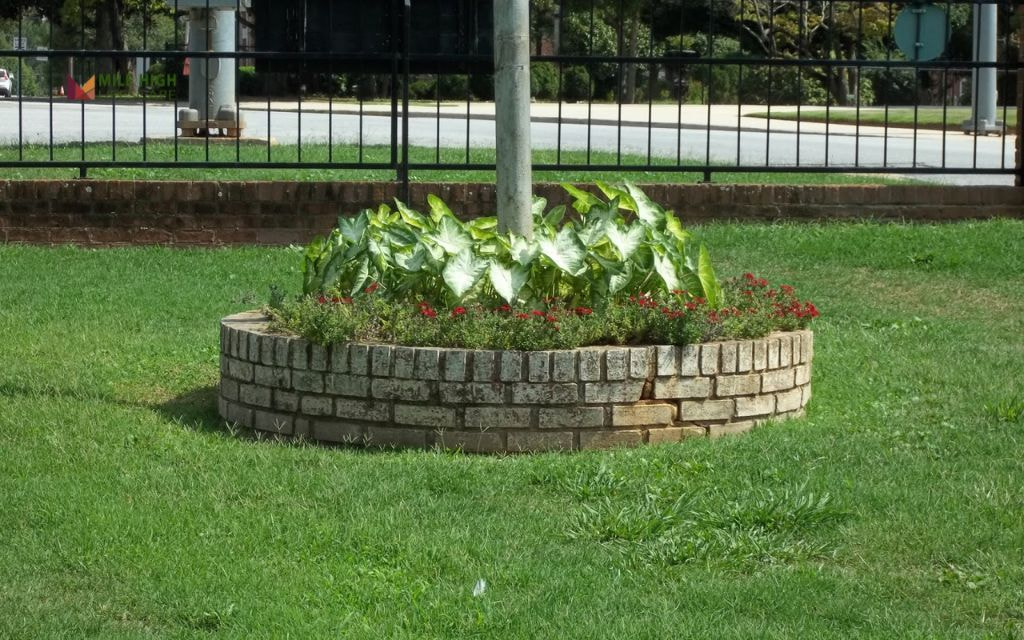
Round Flower Bed Around Trees with Mulch
Create circular beds around established trees using shade-tolerant plants that won’t compete with tree roots. Apply generous mulch layers to conserve moisture and suppress weeds. Plant spring bulbs for early color followed by summer perennials like coral bells and heuchera.
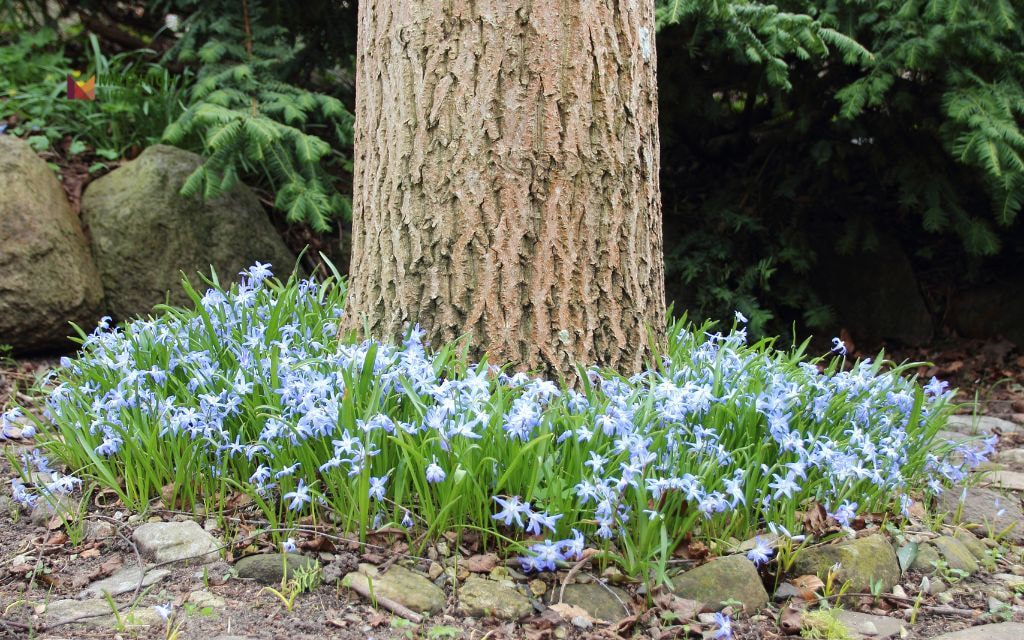
Narrow Border Flower Bed Along Walkways
Line pathways with narrow perennial borders that provide seasonal interest without obstructing traffic. Use compact varieties like catmint, lamb’s ear, and dwarf coneflowers that maintain neat forms. These borders guide visitors while adding color and fragrance to daily journeys.
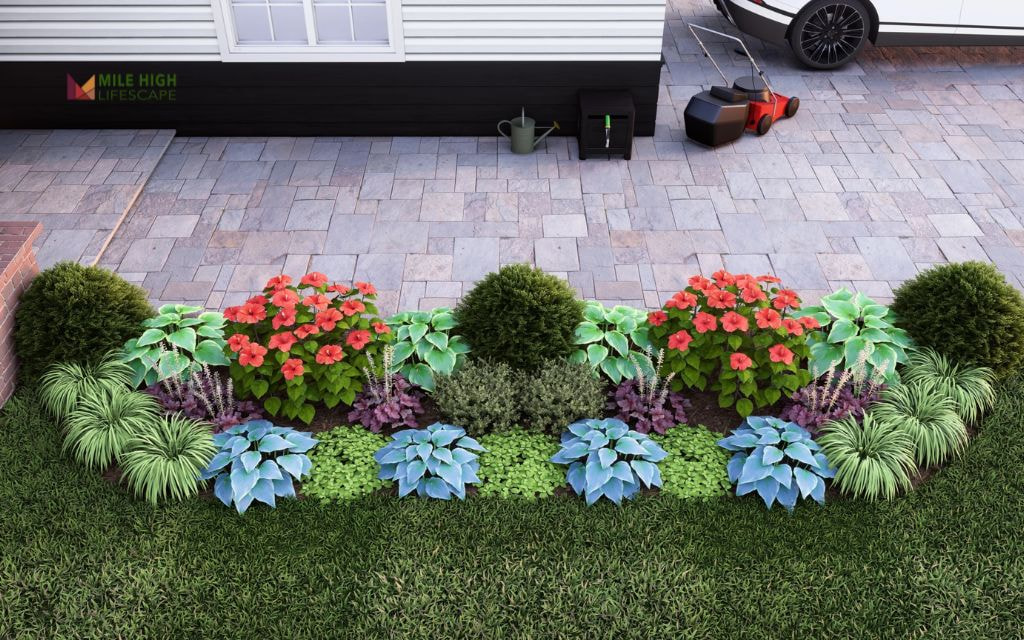
Flower Strip Between Driveway and Sidewalk with Creeping Thyme
Fill challenging strip areas between hardscapes using drought-tolerant ground covers. Creeping thyme withstands foot traffic while producing fragrant purple flowers. This tough perennial requires no supplemental water once established and tolerates road salt and automotive emissions.
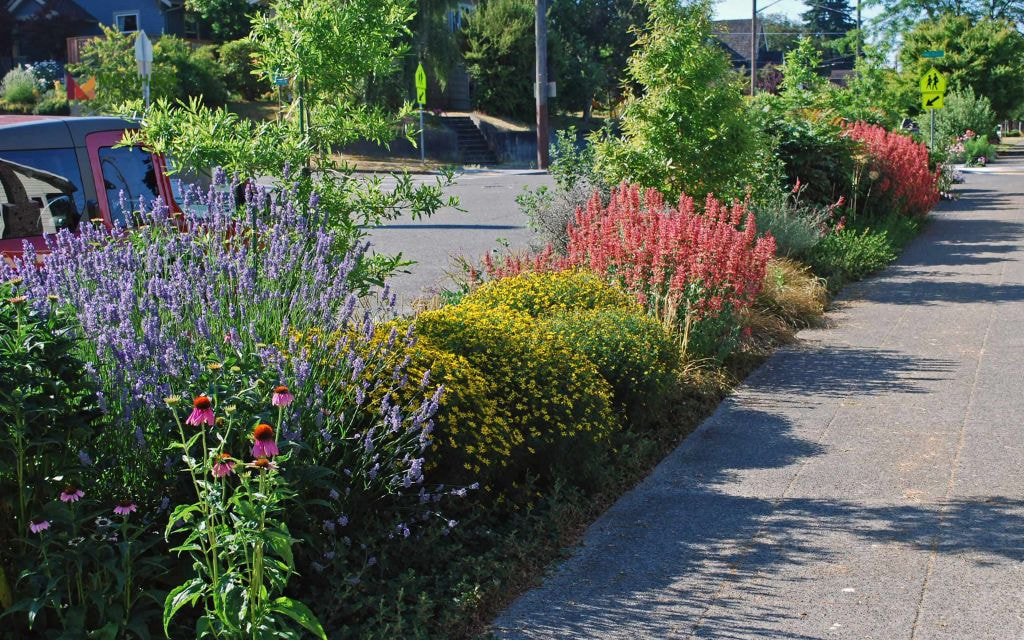
Fall Color Bed: Rudbeckia, Asters, and Ornamental Kale
Extend garden interest through autumn using plants that peak during fall months. Rudbeckia provides golden yellow flowers while native asters contribute purple tones. Ornamental kale adds dramatic foliage colors that intensify with cool temperatures. This combination thrives during Colorado’s beautiful fall weather.
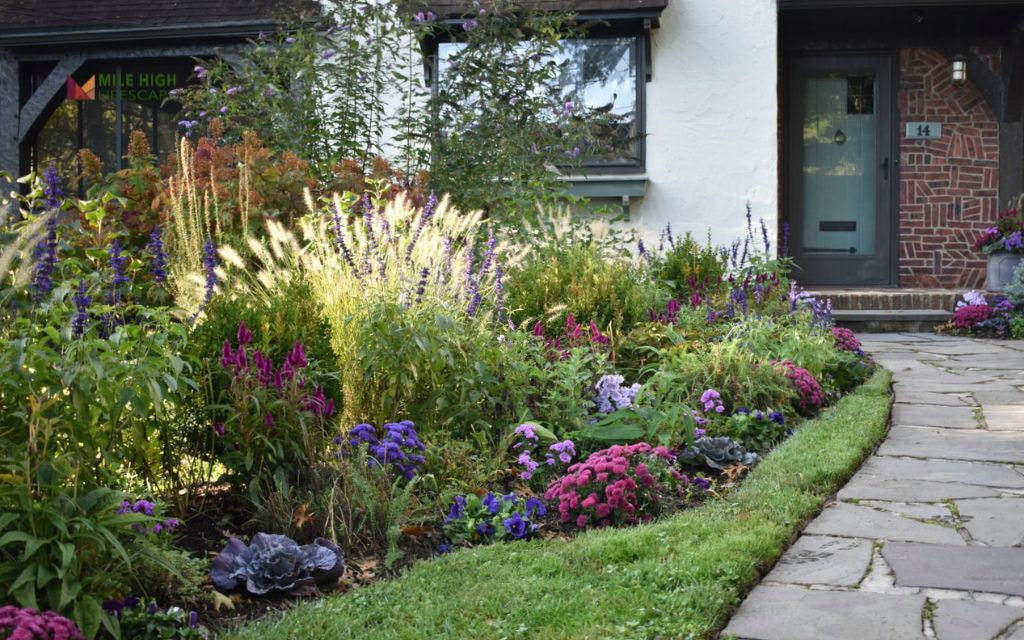
Spring Burst: Pansies, Tulips, and Daffodils Combo
Welcome spring with early-blooming combinations that tolerate late season cold snaps. Plant tulip and daffodil bulbs in fall for spring emergence. Add cool-season pansies for immediate color and extended blooming periods. This trio provides hope during Colorado’s long winters.
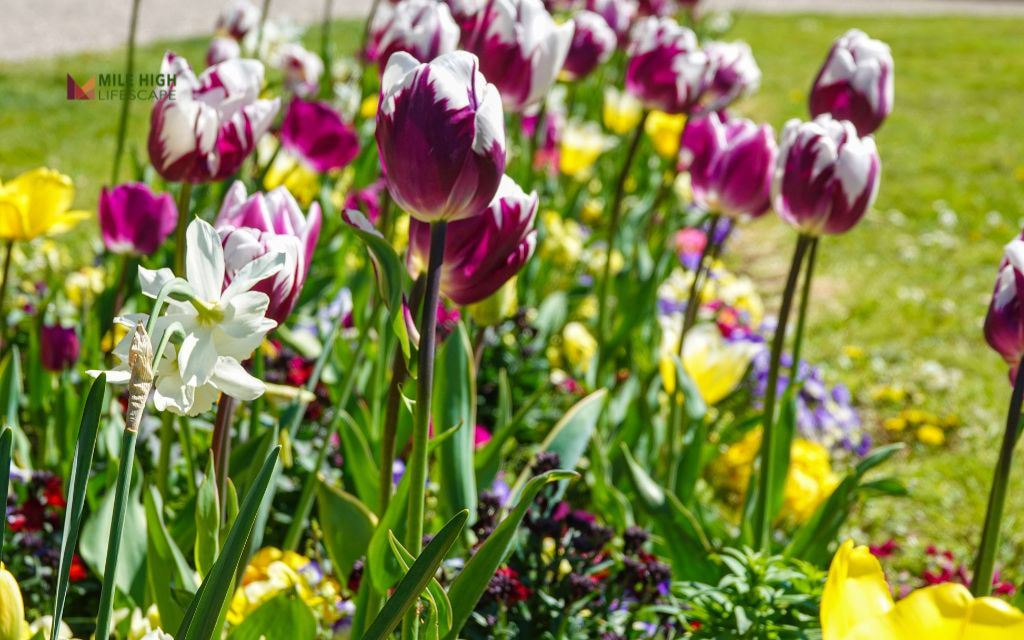
Annual Flower Bed with Rotating Zinnias and Petunias
Create flexible displays using annual flowers that change each growing season. Zinnias provide cut flowers and attract butterflies while petunias offer continuous blooms in multiple colors. Rotate varieties annually to prevent soil depletion and maintain garden interest.
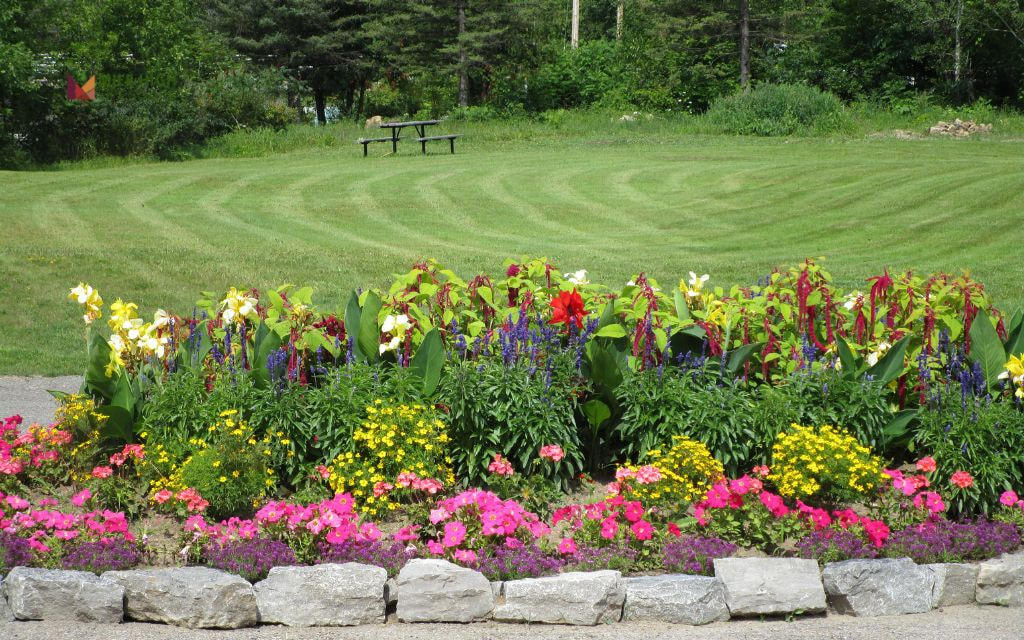
Solar Lighting in Mulch Beds
Incorporate sustainable lighting solutions using solar-powered fixtures strategically placed throughout mulched areas. These lights charge during daylight hours and illuminate gardens during evening hours without electrical connections. Position lights to highlight specimen plants or provide pathway safety.
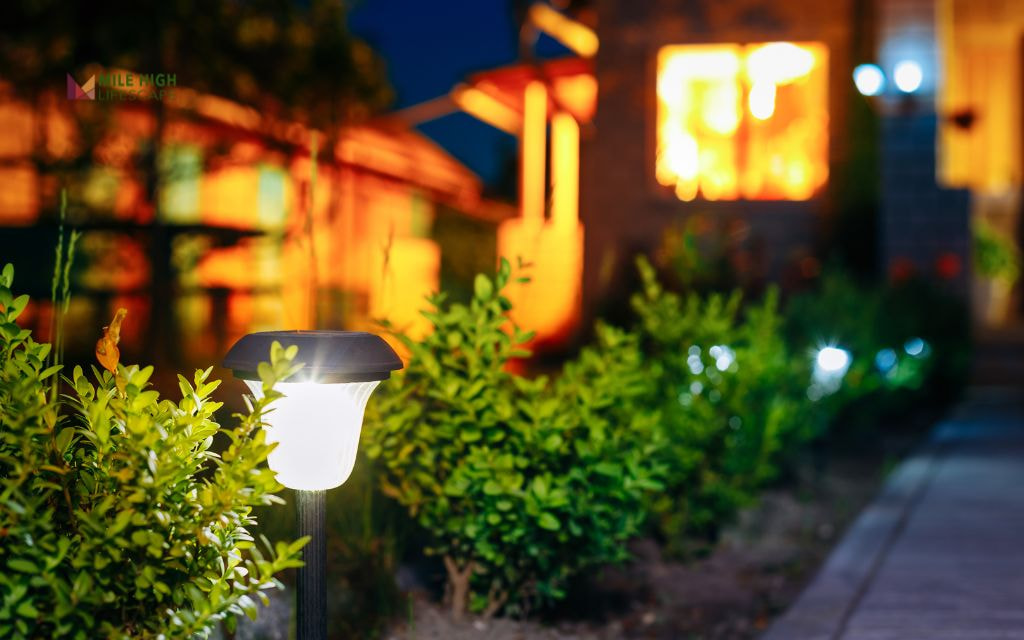
Upcycled Pots Grouped into Layered Displays
Repurpose containers of various sizes to create dynamic vertical displays within flower beds. Use weathered terra cotta, galvanized metal, or painted ceramic pots filled with seasonal plants. Group odd numbers of containers at different heights for visual appeal.

Creative Edging with River Stones or Brick
Define bed boundaries using natural or manufactured materials arranged in artistic patterns. River stones create organic curves while brick provides geometric structure. Both materials prevent grass encroachment while adding permanent landscape architecture. Explore various edging options in our article on best landscape edging.
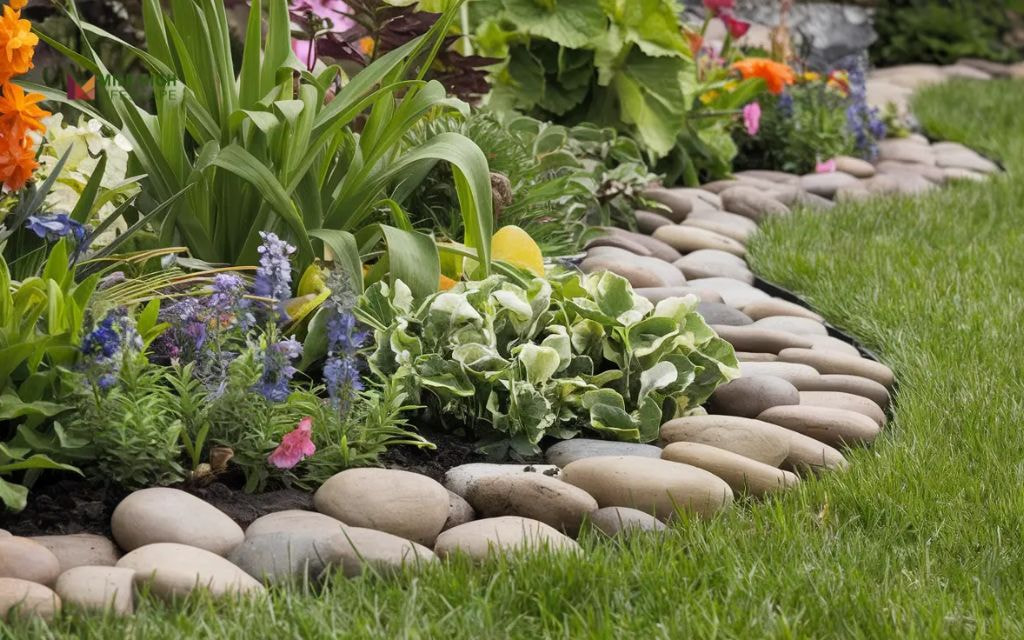
Fence Backdrop with Flower Bed Layering
Use existing fences as backdrops for layered plantings that create depth and visual interest. Position tall plants against fences with progressively shorter varieties toward front edges. This technique maximizes growing space while creating professional landscape appearances.
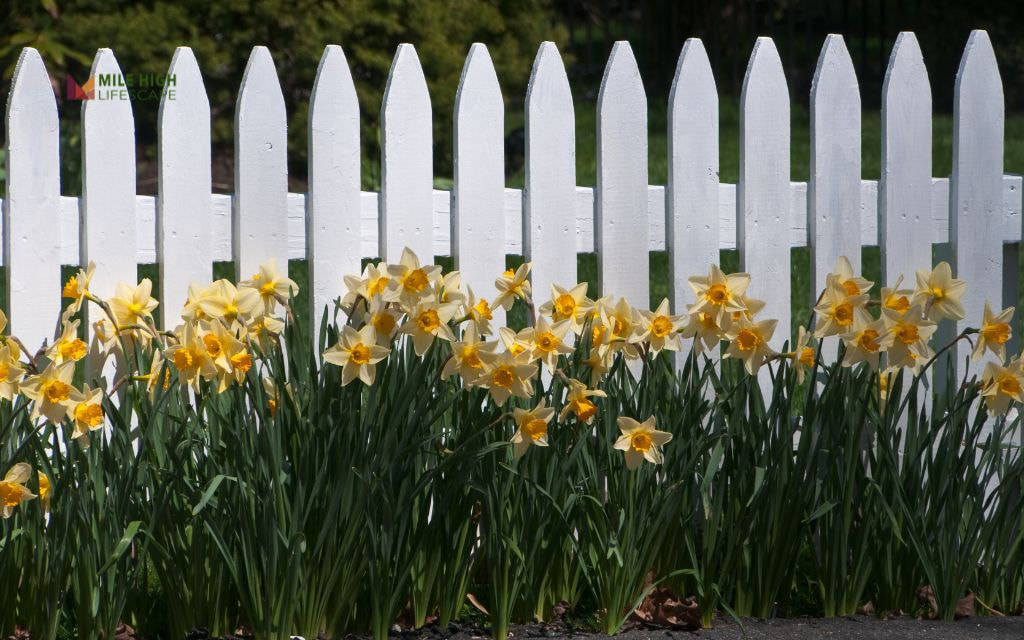
Tips for Designing Flower Bed Ideas in Colorado
- Plan for temperature swings: Colorado’s extreme weather variations from freezing winters to scorching summers, morning frost followed by afternoon heat require plant selections that adapt to temperature changes.
- Favor native and adaptive species: Native varieties like penstemon, blanket flower, and ornamental grasses require less water, fertilizer, and pest management than exotic species struggling in unnatural conditions.
- Incorporate mulch or rock for water retention and erosion control: Organic mulches decompose rapidly in intense sun but provide soil nutrition, while rock mulches last longer and reflect heat without improving soil structure. Choose materials based on your plants’ specific needs and desired maintenance levels.
- Avoid shallow-rooted annuals unless supplemented with irrigation: Colorado’s clay soils become concrete-hard when dry, preventing annual roots from accessing deep moisture reserves. Focus on deep-rooted perennials that establish extensive root systems capable of finding water during extended drought periods.
- Consider mature plant sizes when spacing: Allow adequate room between plants to prevent overcrowding as they reach full size. Proper spacing improves air circulation, reduces disease risk, and ensures each plant receives sufficient sunlight and water resources.
- Group plants with similar water and light requirements: Create zones within your flower bed based on sun exposure and irrigation needs. This approach allows for more efficient watering and ensures all plants receive appropriate care without waste or stress.
Conclusion
Successful Colorado flower beds balance visual appeal with practical sustainability. Selecting appropriate layouts, durable materials, and climate-adapted plants ensures long-term success in our challenging environment.
Native plants support local ecosystems while reducing maintenance requirements. Efficient irrigation systems conserve water while ensuring plant health. Durable materials minimize replacement costs while providing permanent landscape structure.
Ready to create your dream flower bed ideas?
Contact Mile High Lifescape for custom flower bed services designed specifically for Colorado’s climate. Our experienced landscaping team brings nearly two decades of local expertise to every project.
Frequently Asked Questions (FAQs)
What is the best way to layout a flower bed?
Yes, start with a clear design plan that considers sun exposure, water access, and mature plant sizes. Create curved edges for natural appeal and group plants with similar water and light requirements together. Position taller plants toward the back and shorter varieties in front for optimal viewing and light penetration.
What is best to put in flower beds?
Native and adaptive perennials work best in Colorado flower beds. Plants like penstemon, blanket flower, salvia, and ornamental grasses can thrive in our climate. Add organic mulch or decorative rock for moisture retention and weed suppression.
What are the best flowers for a flower bed?
Yes, drought-tolerant perennials perform best in Colorado conditions. Recommended varieties include coneflowers, black-eyed Susans, catmint, lavender, and yarrow. These plants bloom repeatedly throughout growing seasons while tolerating temperature extremes and water limitations common in our region.
How do I arrange flowers in my flower bed?
Start by placing the largest plants first, then fill in with medium and small varieties. Use odd-numbered groupings of the same plant for natural appearance. Consider bloom times to ensure continuous color throughout the growing season. Leave adequate spacing for mature plant sizes to prevent overcrowding.
How to edge flower beds?
Yes, proper edging prevents grass encroachment and creates clean boundaries. Options include natural stone, brick, metal strips, or even trenched edges cut with sharp spades. Install edging materials slightly below ground level to allow mower wheels to roll over edges without damage.
